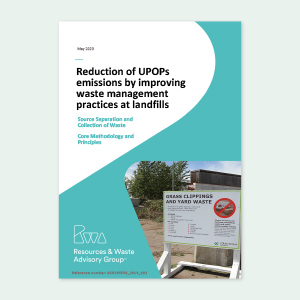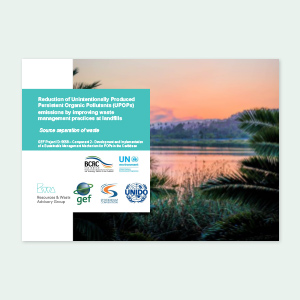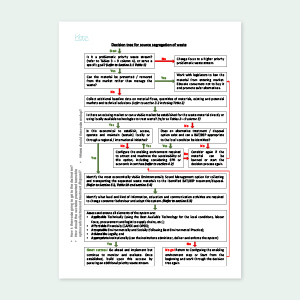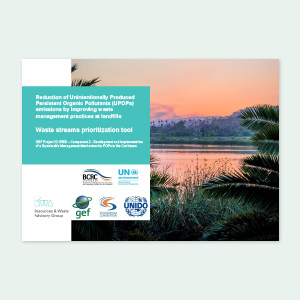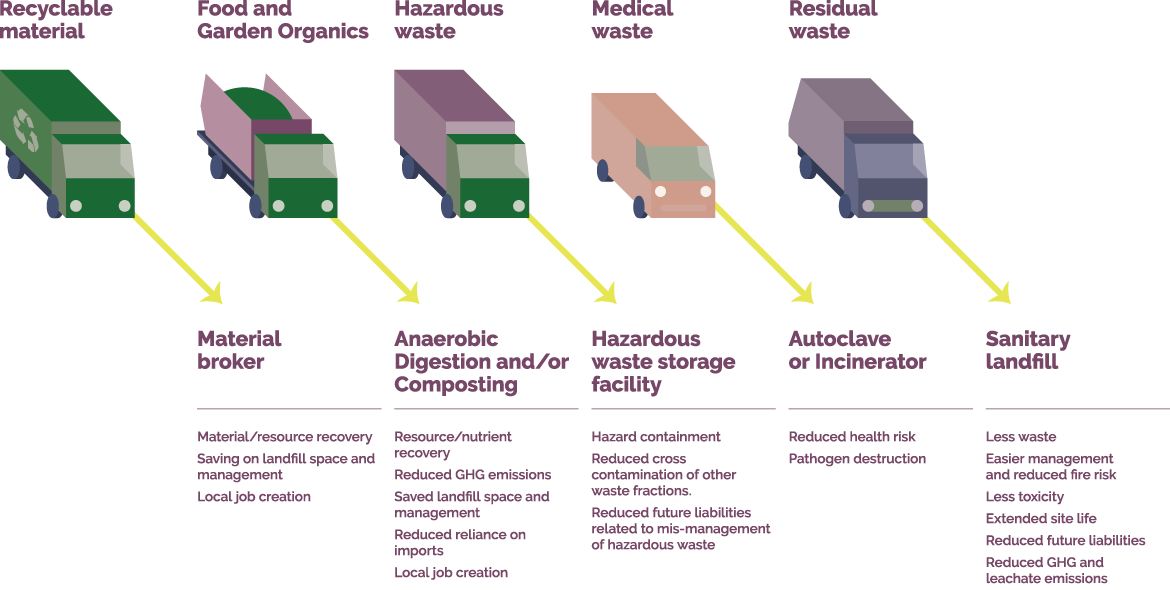
How does segregating and diverting waste benefit landfill?
Source Segregation
The types of waste generated often require very different management approaches. To ensure the best quality of material is recovered and directed to the most appropriate management option, it is essential to segregate the target material from other wastes as early as possible. Segregating and collecting the target waste material as soon as possible after generation has many benefits, not only for recovery of that material, but for easing the management of other waste streams.
Resources below offer guidance on prioritizing waste streams for source segregation, guiding principles that should be taken into consideration when implementing source segregation of waste and practical examples and tools to aid in implementation.
Core methodology on source segregation of waste (report)
When looking to implement source segregation of waste, lessons can be learned from existing initiatives, helping to overcome some of the inherent challenges associated with changing a waste management system. This report presents guiding principles and concepts on how to plan a source segregation initiative within an integrated waste management system and includes international examples of best practice in implementing source segregation of waste fractions. This report is intended for waste managers and policy makers to help support the design and implementation of source segregation programs.
Source segregation decision tree
Source segregation decision tree, which aims to assist, navigate and use the core methodology document when planning a source separation initiative.
Waste stream prioritization tool
Simple matrix guiding tool to aid the prioritization of waste streams for source segregation. The tool is aimed at prioritizing waste streams which have the greatest impact on POPs/UPOPs emissions from landfills. The same principles and matrix can be adjusted in case of a different end goal for source segregation of waste, for example for maximizing void space use in existing landfills or reducing leachate formation.
Videos
Video walk-through of a civic amenity site for source segregated recyclables in Northern Ireland
Promotional video of a civic amenity site for source segregated waste located in Malta
Funded by
Global Environment Facility (GEF)

Implemented by
The United Nations Industrial
Development Organization (UNIDO)

Executed by
The Basel Convention Regional Centre for Training and Technology
Transfer for the Caribbean (BCRC-Caribbean)


